Olga Karnovich (1865-1929), Princess Paley, was the second and morganatic wife of Grand Duke Paul Alexandrovich of Russia, the brother of Tsar Alexander III. His first wife, Princess Alexandra of Greece and Denmark died in 1891, and the grand Duke later engaged in an open affair with Olga Karnovich who was married to Erich von Pistohkohrs at the time.
A Belle Époque tour de force
This truly exceptional set of jewels comprising a head ornament/aigrette, a necklace and a devant de corsage seems to us to be the distillation of the best of Cartier’s production between 1910 and 1915 and was created for a member of the Russian Imperial family in the last years before the revolution.
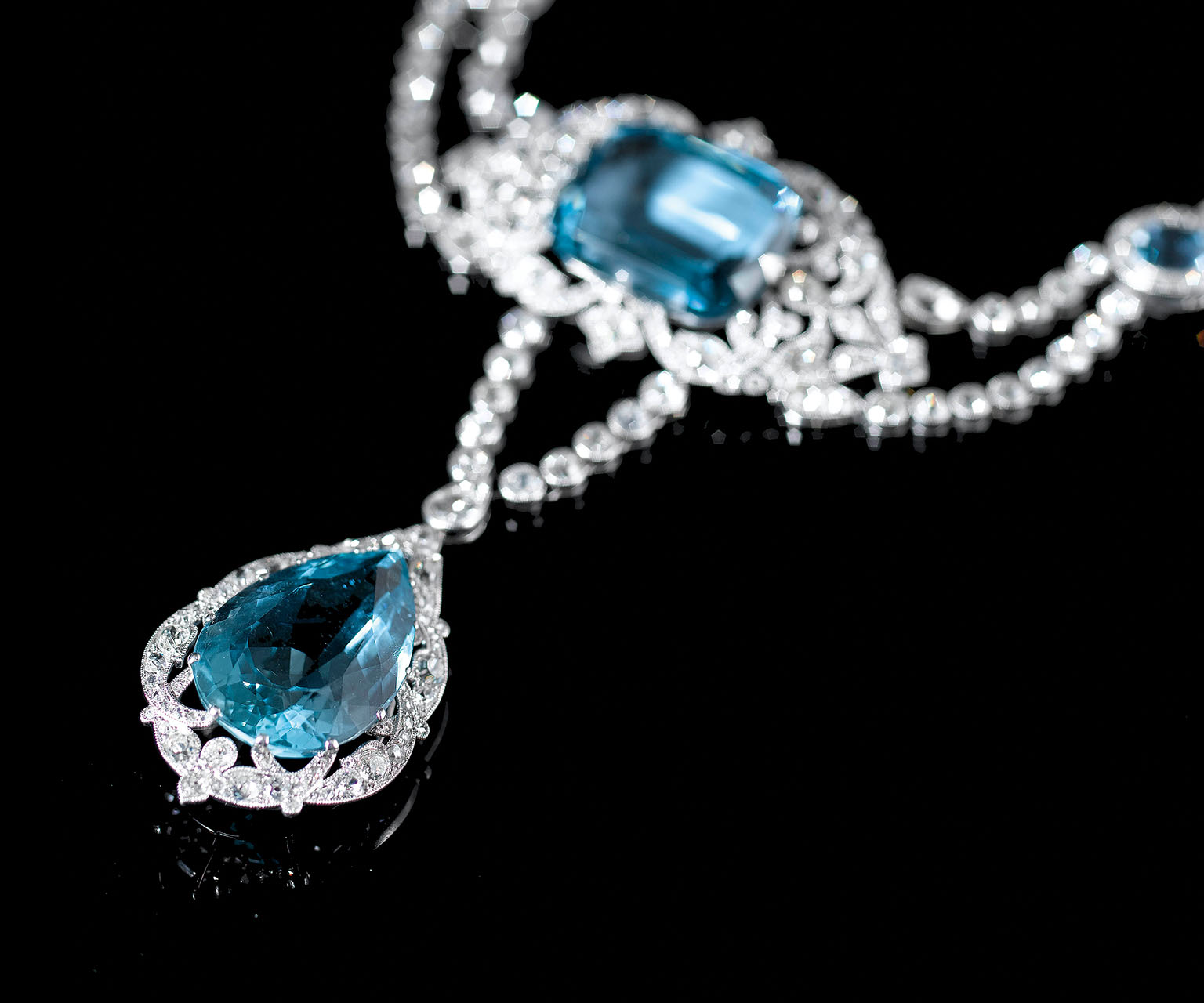
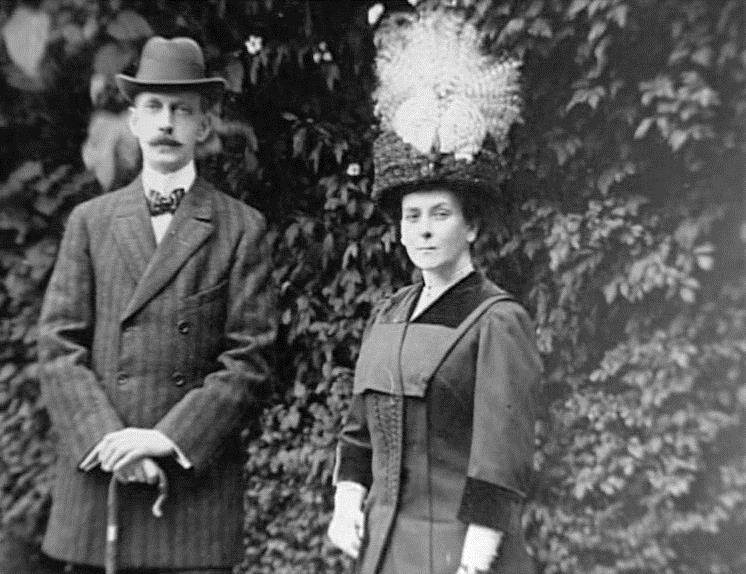
The birth of their illegitimate son, Vladimir, and Olga’s subsequent divorce, were major scandals among the Imperial entourage of St Petersburg. Upon learning of these events, the Grand Duke’s nephew, Tsar Nicholas II refused the couple permission to marry. Paul had to resign from his military duties and all his Russian properties were seized. The couple fled Russia and settled in an elegant town house near Paris where they married in 1902. In 1904 Luitpold, Prince Regent of Bavaria, granted Olga the title of Countess Hohenfelsen. In 1912 the Tsar finally recognized their marriage, gave Olga the title of Princess Paley, and allowed them to return to Russia.
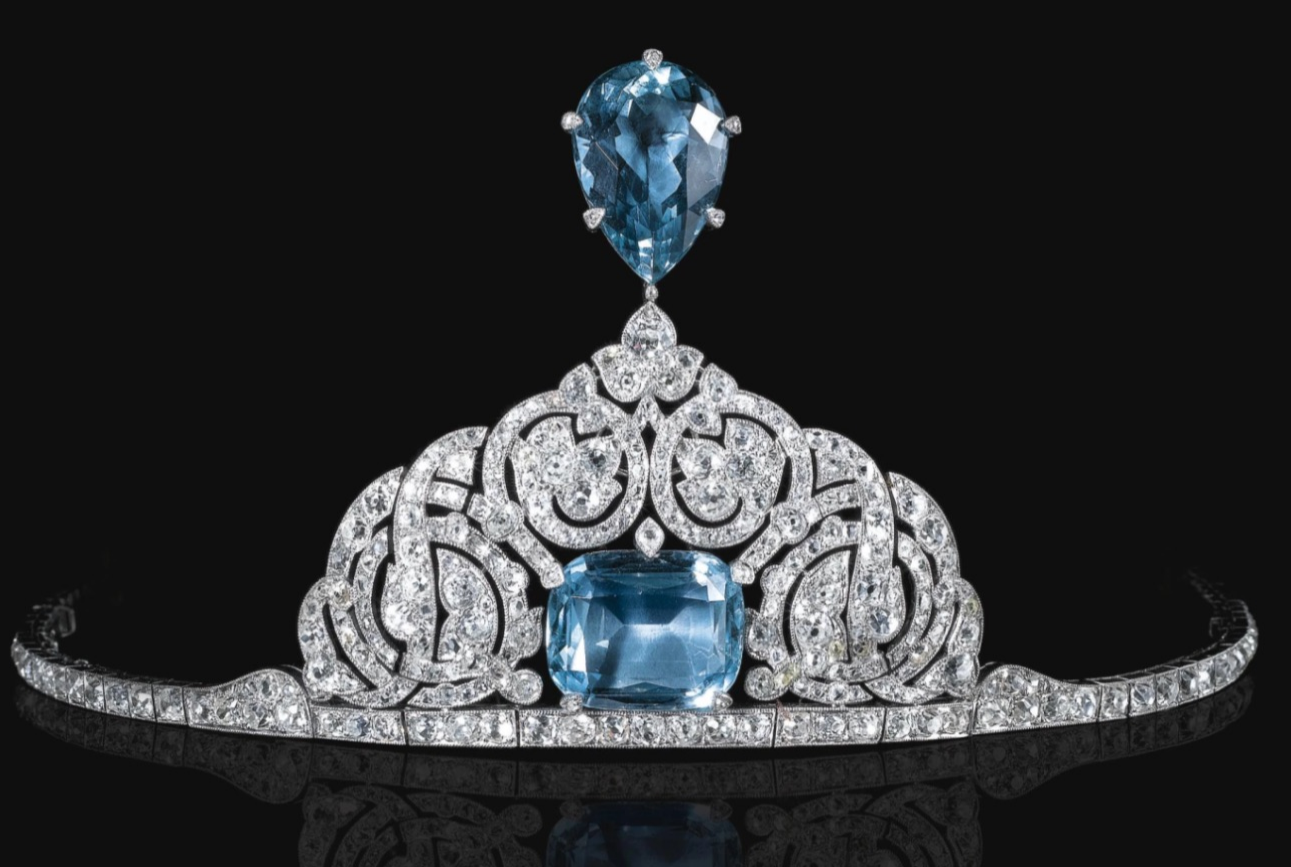
The Grand Duke and his wife were frequent clients at Cartier’s premises in Rue de la Paix during their Parisian exile and this set of aquamarine jewels must have been one of their most substantial purchases.
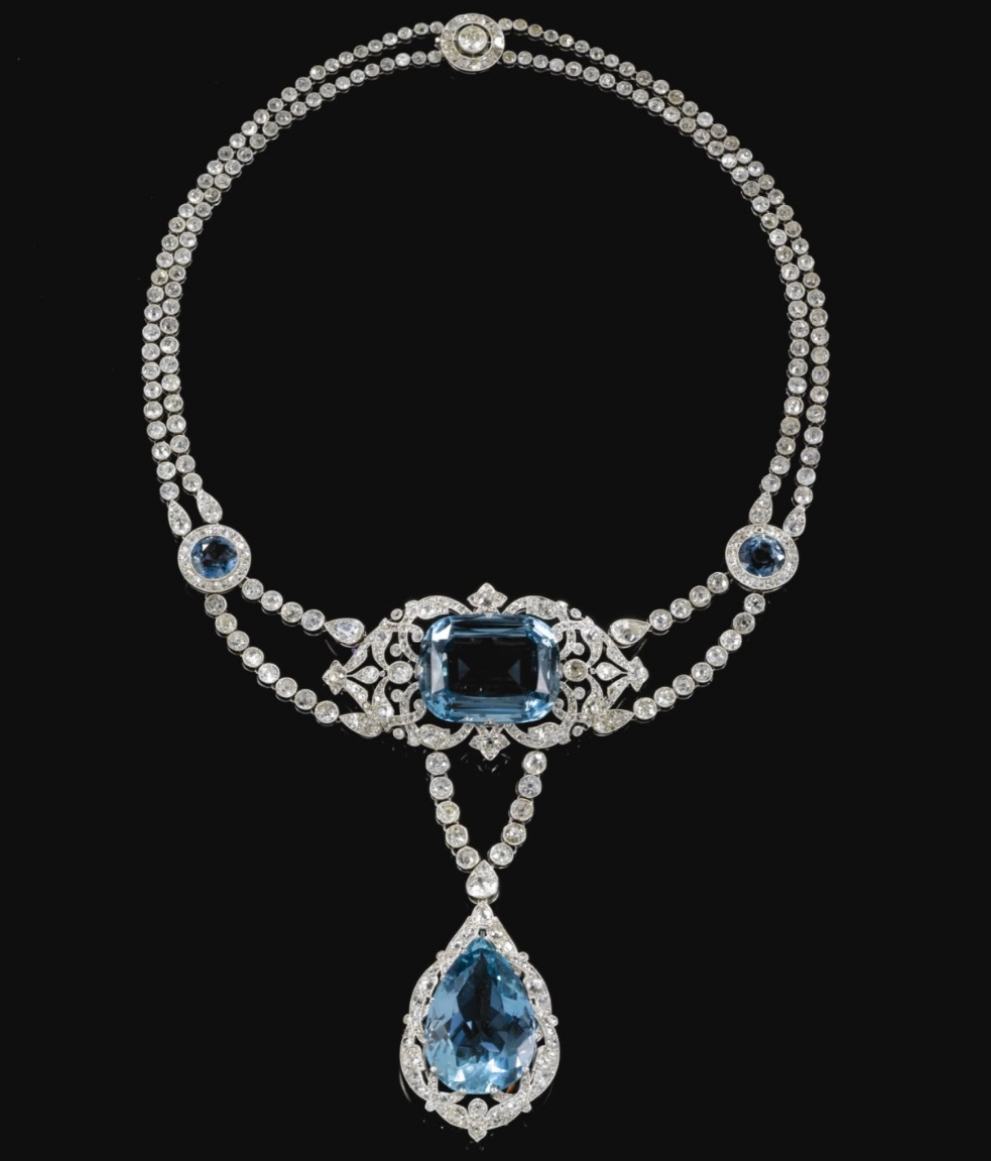
This is a truly unique set of jewels. It is very rare for sets such as this to survive intact for over a century, as they had to negotiate the stormy seas of the Russian revolution and subsequent sales. The hair ornament/aigrette in particular, with its intertwined scroll and leaf motifs, displays clear Russian influence in shape and decoration and is set, like the necklace and corsage ornament, with large aquamarines and would have been embellished with a panach – an egret feather.
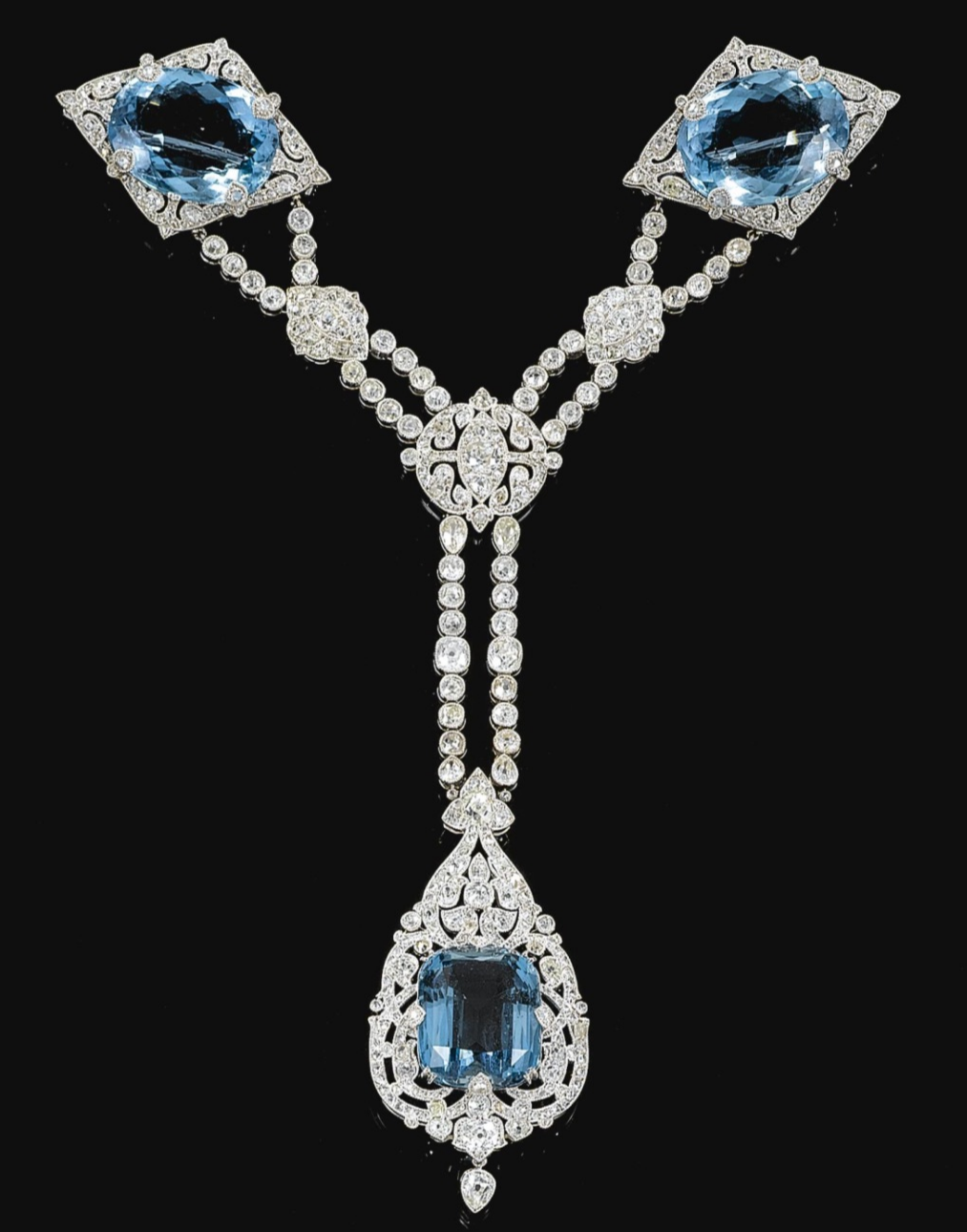
Although aquamarines feature frequently in jewels created by Fabergé around 1900, it is very unusual for them to have been given such an important role in high jewellery dating from the early years of the twentieth century, and it appears that the parure may have been a special commission by these illustrious clients of very sophisticated tastes, possibly to celebrate their return to Russia.
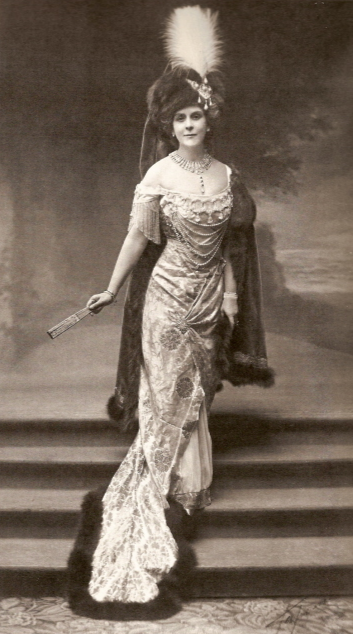
These jewels remind us of another superb aquamarine jewel which we handled several decades ago and features in Understanding Jewellery, it is set with an imposing aquamarine weighing in excess of 150 carats (see image below).
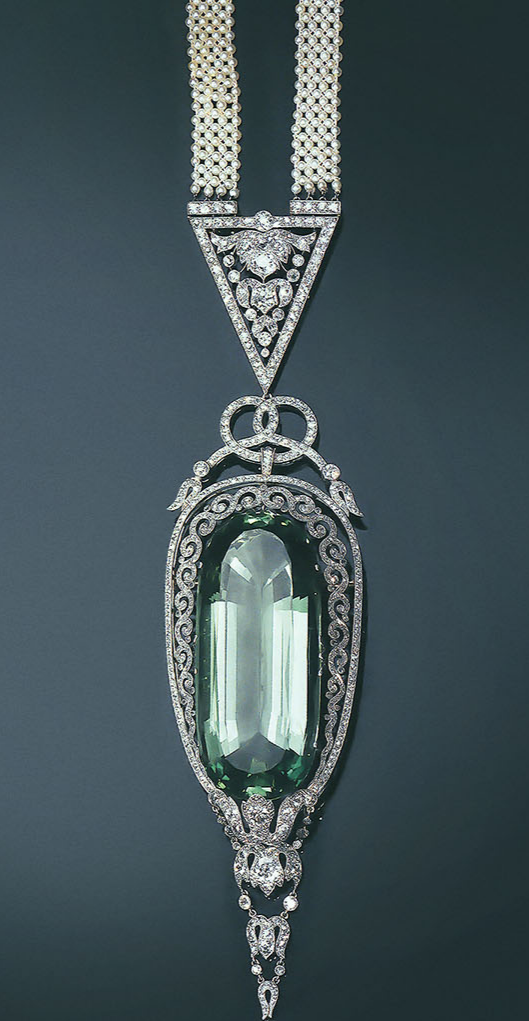
Nowadays, the green colour of the aquamarine would have been 'improved' to a deep blue by artificial means.
In our opinion the green hue of this exceptional stone, which weighed over 150 carats, is well suited to the jewel.